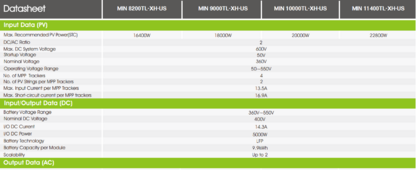speedracer77
New Member
A good friend of mine is taking advantage of local government incentives to install a grid tie system to his house. He will be on net metering so doesn't require batteries or a charger right now. If I design and install his system for him he will give me some panels which I can use to power my off grid home. I don't have access to the government incentives because I'm not grid tied, so this will be my chance to get into more solar than my 2 40w RV panels and hopefully stop running the generator all the time.
He has 20 480w panels he got a good deal on. I need to choose an inverter and deside how to wire the system. These are the panels:
Do I need a 9,600 watt inverter? I doubt the panels will charge at full capacity often. Also they say max series fuse size is 20 amp. Does that mean I can wire 2 panels in series max, and each of those series can be wired in parallel? I have lots of electrical experience, just not in solar.
He has 20 480w panels he got a good deal on. I need to choose an inverter and deside how to wire the system. These are the panels:
Do I need a 9,600 watt inverter? I doubt the panels will charge at full capacity often. Also they say max series fuse size is 20 amp. Does that mean I can wire 2 panels in series max, and each of those series can be wired in parallel? I have lots of electrical experience, just not in solar.



